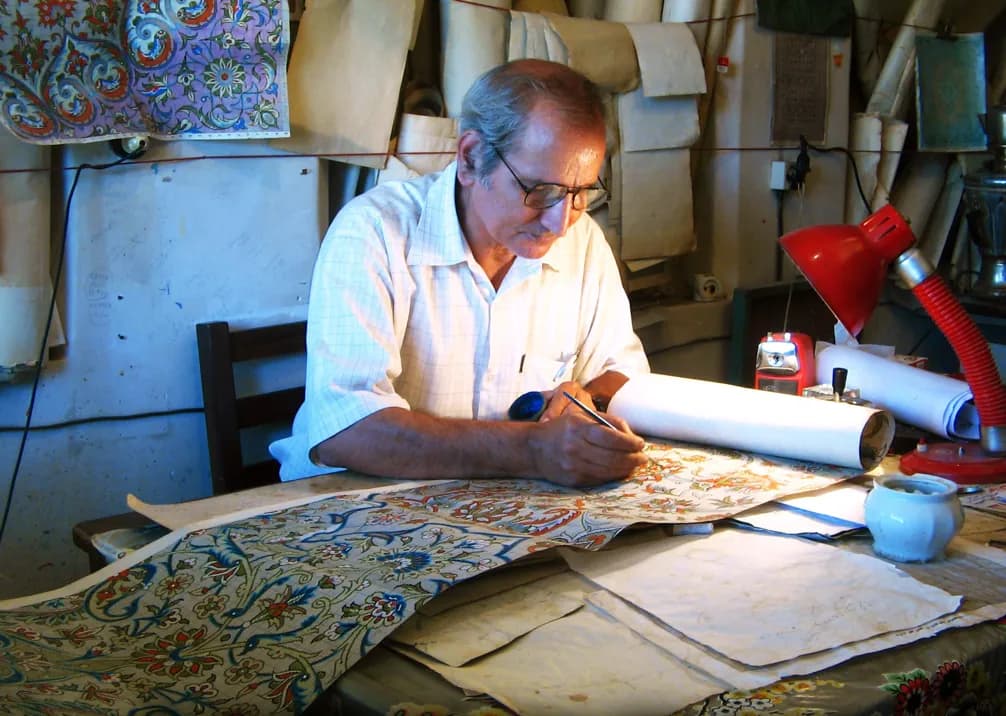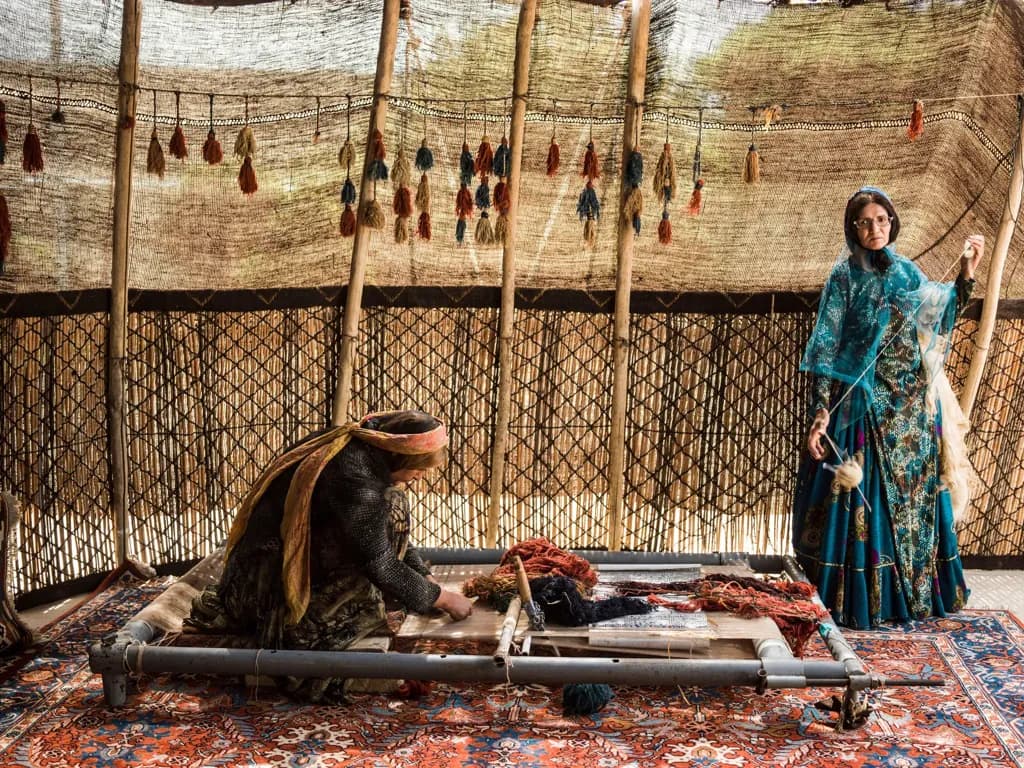Rey rugs, emerging from the historic region of Rey (or Ray) near modern-day Tehran, carry the legacy of one of the oldest and most significant cities in Persian history. Once known as Ragha in ancient texts, Rey's weaving tradition dates back to the pre-Islamic era, making it one of the oldest carpet-producing regions in the world.
Rey carpets are distinguished by their unique combination of urban sophistication and tribal influences, reflecting the area's historical position as a crucial trading hub where various artistic traditions converged. The weaving style demonstrates a remarkable ability to blend classical Persian design elements with subtle local characteristics that set them apart from other regional styles.
The color palette of Rey rugs typically features rich, earthy tones complemented by vivid highlights. Deep burgundies, warm browns, and midnight blues form the foundation, while carefully placed accents of ivory, gold, and occasional touches of green create depth and visual interest. These colors are achieved through both natural and modern dying techniques, with many workshops still maintaining traditional methods for their premium pieces.
One of the most distinctive features of Rey carpets is their innovative approach to traditional medallion designs. While respecting classical formats, Rey weavers often incorporate subtle asymmetrical elements and unexpected color transitions that create a dynamic, contemporary feel within traditional frameworks. The fields are typically adorned with intricate floral patterns that demonstrate exceptional attention to detail and artistic vision.
The technical construction of Rey rugs reflects generations of weaving expertise. Using high-quality wool, often sourced from local sheep known for their fine, durable fleece, these carpets are woven on cotton foundations with exceptional knot density. The Persian knot technique employed allows for precise rendering of complex patterns, with better pieces achieving counts of 300-400 KPSI (knots per square inch).
Rey weavers are particularly noted for their mastery of border designs, often featuring multiple guard borders that frame the main border with sophisticated geometric patterns. These borders frequently incorporate calligraphic elements and stylized botanical motifs that showcase the region's strong connection to Persian artistic traditions.
The sizing of Rey rugs tends to be practical and varied, ranging from intimate prayer rugs to impressive room-sized carpets. Each size category maintains consistent quality and attention to proportional harmony, making these pieces suitable for various interior applications. The durability of Rey carpets is exceptional, with many antique pieces demonstrating remarkable resilience to wear while maintaining their artistic integrity.
Modern Rey production combines respect for traditional techniques with innovation in design and color selection. While maintaining the high standards of classical Persian carpet making, contemporary Rey weavers have successfully adapted their craft to appeal to current interior design trends. This adaptability, combined with unwavering quality standards, has helped maintain the desirability of Rey rugs in today's market.
The investment potential of Rey carpets is particularly noteworthy, as they represent an important chapter in Persian weaving history while remaining somewhat less widely known than some other regional styles. This combination of historical significance, exceptional craftsmanship, and relative market exclusivity makes them increasingly attractive to discerning collectors and interior designers.
Each Rey rug tells a story of artistic evolution spanning centuries, where ancient techniques meet contemporary aesthetics. These pieces continue to uphold the reputation of one of Persia's most historically significant cities, offering both practical luxury and artistic excellence to those who appreciate fine carpet craftsmanship.
















